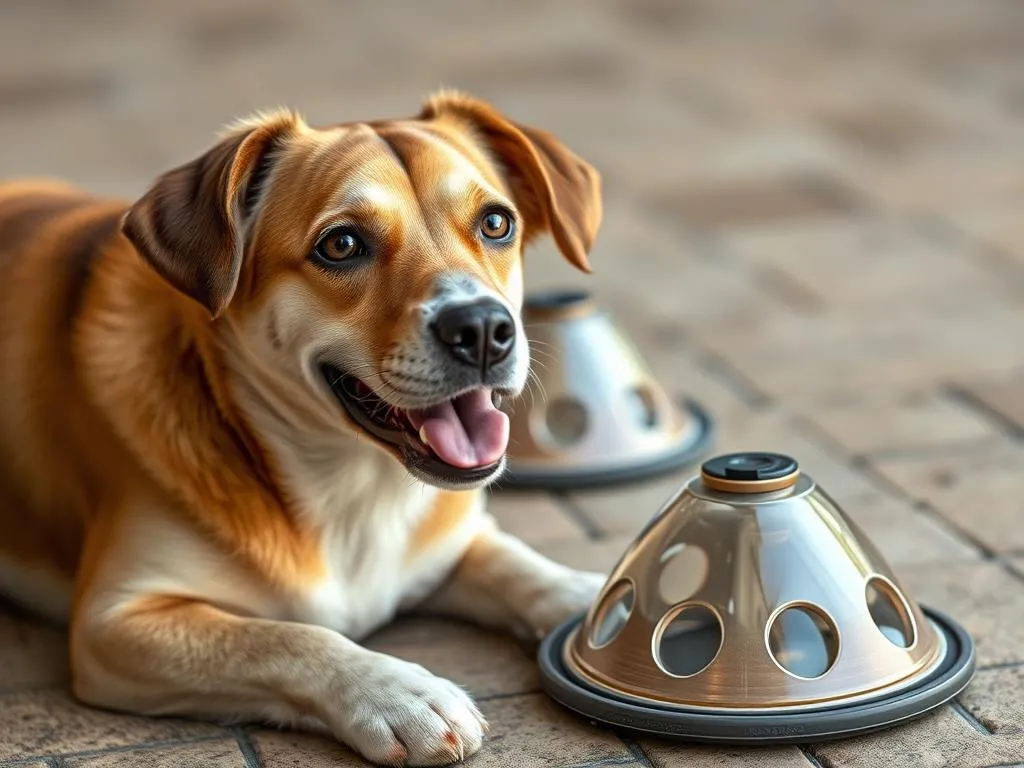
Introduction
Caring for your dog’s health is a top priority for pet owners, especially when it comes to preventing and treating common health issues. One crucial aspect of dog health care involves the use of dog cones, which serve specific purposes in ensuring our furry friends recover safely and comfortably. Dog cones, also known as Elizabethan collars or E-collars, help prevent dogs from licking or biting at wounds, surgical sites, and skin irritations, thereby promoting healing and preventing further injury.
In this comprehensive guide, we will explore the best dog cones available on the market today, covering their types, features, and the right situations for their use. Whether your dog needs one after surgery or for a minor skin issue, understanding how to choose the right cone can significantly impact their recovery.
Understanding Dog Cones
What Are Dog Cones?
Dog cones are protective devices designed to prevent dogs from reaching their wounds, stitches, or irritated skin. They create a physical barrier that discourages licking and biting, which can lead to infections or complications.
There are several types of dog cones available, including:
- Elizabethan collars (E-collars): The traditional cone-shaped collar that fits around the dog’s neck.
- Inflatable collars: Soft, air-filled collars that provide comfort while still preventing access to wounds.
- Soft fabric collars: Comfortable fabric collars that are easier on the dog’s neck and are often adjustable.
- Alternative options: Such as recovery suits, which cover the body and protect surgical sites without the discomfort of a cone.
When to Use a Dog Cone
Knowing when to use a dog cone is essential for effective health care. Common situations include:
- Post-surgery recovery: After spaying, neutering, or other surgical procedures, cones prevent dogs from licking stitches.
- Skin infections and irritations: If your dog has a rash or hot spot, a cone can help prevent further damage.
- Prevention of licking or biting wounds: Dogs often lick at areas of discomfort, and cones can help keep their attention away from these spots.
- Situations requiring behavioral modification: In some cases, cones can be used to deter unwanted behaviors, such as excessive scratching.
Choosing the Best Dog Cone
Factors to Consider
When selecting the best dog cone for your furry friend, consider the following factors:
- Size and fit: Choose a cone that fits snugly but comfortably around your dog’s neck.
- Material and comfort: Look for materials that won’t irritate your dog’s skin. Soft or inflatable options are often preferred for comfort.
- Durability and resistance to wear: Ensure the cone can withstand your dog’s activity level without tearing or losing shape.
- Ease of cleaning: Opt for washable materials to maintain hygiene during use.
Top Features of Quality Dog Cones
High-quality dog cones often include several key features:
- Adjustable straps: This allows for a customizable fit, ensuring comfort and effectiveness.
- Breathable materials: Helps to prevent overheating and discomfort during use.
- Lightweight design: A lighter cone is easier for your dog to wear without feeling weighed down.
- Visibility and safety features: Reflective materials can enhance visibility, especially during nighttime walks.
Reviews of the Best Dog Cones
Best Overall Dog Cone
One of the standout options for pet owners is the Comfy Cone. This cone combines functionality with comfort, making it an excellent choice for most dogs.
- Description: The Comfy Cone is made from durable, padded fabric that provides protection without sacrificing comfort.
- Key features: Adjustable straps, washable, and available in various sizes.
- Pros: Comfortable, easy to clean, and flexible design.
- Cons: May not be suitable for all dogs, especially those determined to reach their wounds.
- Price range: $20 – $30.
Best Inflatable Dog Cone
For those looking for a more comfortable option, the ZenPet ProCone is a fantastic inflatable collar.
- Description: This collar inflates around your dog’s neck and allows for more mobility without compromising protection.
- Key features: Removable cover for washing, adjustable straps.
- Pros: Comfortable, lighter than traditional cones, and provides a full range of motion.
- Cons: Can be punctured if not handled carefully.
- Price range: $25 – $35.
Best Soft Fabric Dog Cone
If you prefer a softer option, the PetSafe Soft Cone is a great choice.
- Description: This cone is made from soft fabric and provides comfort while still preventing your dog from reaching their wounds.
- Key features: Adjustable velcro straps, machine washable.
- Pros: Comfortable, easy to wear, and machine washable.
- Cons: May not provide enough rigidity for some dogs.
- Price range: $15 – $25.
Best for Large Dogs
Large dog owners will appreciate the Big Dog E-Collar, designed specifically for larger breeds.
- Description: This extra-large E-collar is durable and provides ample protection for larger dogs.
- Key features: Sturdy design, adjustable straps, and available in various sizes.
- Pros: Well-suited for large breeds, easy to adjust, and durable.
- Cons: Bulky design may be uncomfortable for some.
- Price range: $30 – $50.
Best Budget-Friendly Option
For pet owners on a budget, the PetSafe EasySport Collar offers excellent value.
- Description: This affordable option provides basic protection without breaking the bank.
- Key features: Lightweight, comfortable, and adjustable.
- Pros: Inexpensive, simple design, and effective.
- Cons: Less durable than more expensive options.
- Price range: $10 – $15.
How to Properly Fit a Dog Cone
Measuring Your Dog for a Cone
To ensure your dog is comfortable and the cone functions effectively, it’s crucial to measure your dog correctly:
- Measure the circumference of your dog’s neck just below the ears.
- Measure the length from the neck to the snout, ensuring there’s enough room for the cone to fit comfortably without obstructing vision.
- Choose a cone size that accommodates these measurements, allowing for some adjustment.
Tips for Ensuring Comfort
Once you have the right cone, follow these tips to maximize comfort:
- Adjust the cone to fit snugly but not too tightly.
- Monitor your dog’s behavior: Check for signs of discomfort or distress and make adjustments as necessary.
- Consider alternatives if the cone is uncomfortable, such as inflatable collars or recovery suits.
Alternatives to Dog Cones
Recovery Suits
Recovery suits are an innovative alternative to traditional dog cones.
- Description and benefits: These full-body suits cover the dog’s wounds and prevent them from licking or scratching. They are particularly useful for abdominal surgeries.
- When to use a recovery suit over a cone: Recovery suits are often preferable when a cone may hinder a dog’s ability to eat, drink, or move comfortably.
Other Cones and Collars
Various innovative products are available as alternatives to traditional cones:
- Pros and cons of each alternative: Soft collars offer comfort but may not provide enough protection, while inflatable collars allow for greater mobility but can be punctured.
Tips for Dog Care During Cone Use
Managing Your Dog’s Comfort
Creating a cozy environment is essential for your dog’s well-being during cone use.
- Create a cozy environment: Provide soft bedding and a quiet space for your dog to rest comfortably.
- Encouraging hydration and nutrition: Ensure food and water bowls are easily accessible, and consider raising them if your dog struggles to reach them.
Adjusting to Life with a Cone
Transitioning to life with a dog cone can be challenging for both you and your pet.
- Training tips for acclimating to the cone: Gradually introduce the cone, allowing your dog to wear it for short periods before extending the duration.
- Activities to keep dogs engaged: Engage your dog in gentle play or provide puzzle toys to keep them occupied.
Monitoring Recovery
Keep a close eye on your dog’s recovery and watch for any signs of complications.
- Signs of complications: Look for increased redness, swelling, or discharge at the surgical site.
- When to consult a veterinarian: If you notice any concerning symptoms or if your dog seems in distress, reach out to your vet for advice.
Conclusion
Selecting the best dog cone is vital for ensuring your dog’s health and comfort during recovery. With the right cone and proper care, you can help your furry friend heal effectively. Always consult with a veterinarian if you’re uncertain about the best practices for your dog’s health care needs. Your dog’s well-being should always be the top priority, and investing time in understanding their recovery process will pay off in the long run.









